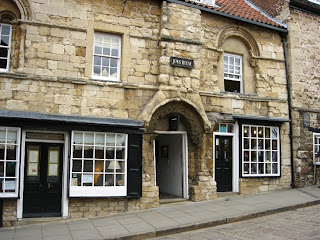Photo courtesy: Jean Jacobsen - President, Castle Rock Writers.
Left to right: Elizabeth Wallace and Kate Tweedy.
At the 2012 Castle Rock Writers' Conference, I had the pleasure of meeting the distinguished co author of the fabulous book, Secretariat's Meadow - The Land, The Family, The Legend.
During Kate's presentation (to a packed house I might add,) she had the audience laughing one minute, and clapping and cheering the next, as we watched actual footage of Secretariat's wins on the racecourse. It was a truly uplifting and wonderful story of family life, their dreams, and accomplishments.
Following is a brief description of her book taken from her site.
This
new vibrant coffee-table book illustrates how the great champion Secretariat
represented the culmination of two centuries of history, a direct legacy of
both the land on which he was born and of the people who bred and raised him.
“Secretariat’s Meadow – The Land, The Family, The Legend" by authors Kate Tweedy and Leeanne Ladin traces the rags to riches to racing saga of Christopher Chenery, who defied the skeptics and transformed the dilapidated farm into a showplace of Thoroughbred champions. It shows how his dutiful daughter, Penny, took over the stable and claimed racing’s most coveted prize. It tells the untold stories of the champion racehorses, such as Hill Prince, Cicada and Riva Ridge, who preceded Secretariat in the limelight. Moreover, the book reveals the inextinguishable spirit of a piece of land, dating back to 1805, that has been and continues to be a wellspring of dreams. Adding to the richness of the story are the vivid memories of family historian, Kate Chenery Tweedy, daughter of Penny Chenery and granddaughter of Chris Chenery. Kate spent many childhood summers at The Meadow learning to ride and ultimately witnessed her mother’s horse capture the Triple Crown and the nation’s heart. Kate’s personal recollections, along with access to the extensive records of Meadow Stable and the Chenery family private collection of photographs and papers, give this literary accounting unmatched authenticity. Horse lovers as well as history buffs will appreciate the never-before published photographs in this unique pictorial history. The exclusive interviews with family members and former Meadow grooms who tended to the stable’s champions provide an intimate behind the scenes glimpse of the famous farm not found in print or film. “Secretariat’s Meadow – The Land, The Family, The Legend” is a story of family allegiance and equine lineage, of overcoming long odds and going the distance. It’s about dreams thwarted and dreams surpassed. But most of all, it’s how this piece of land in Virginia gave rise to an American racing legend. |




































